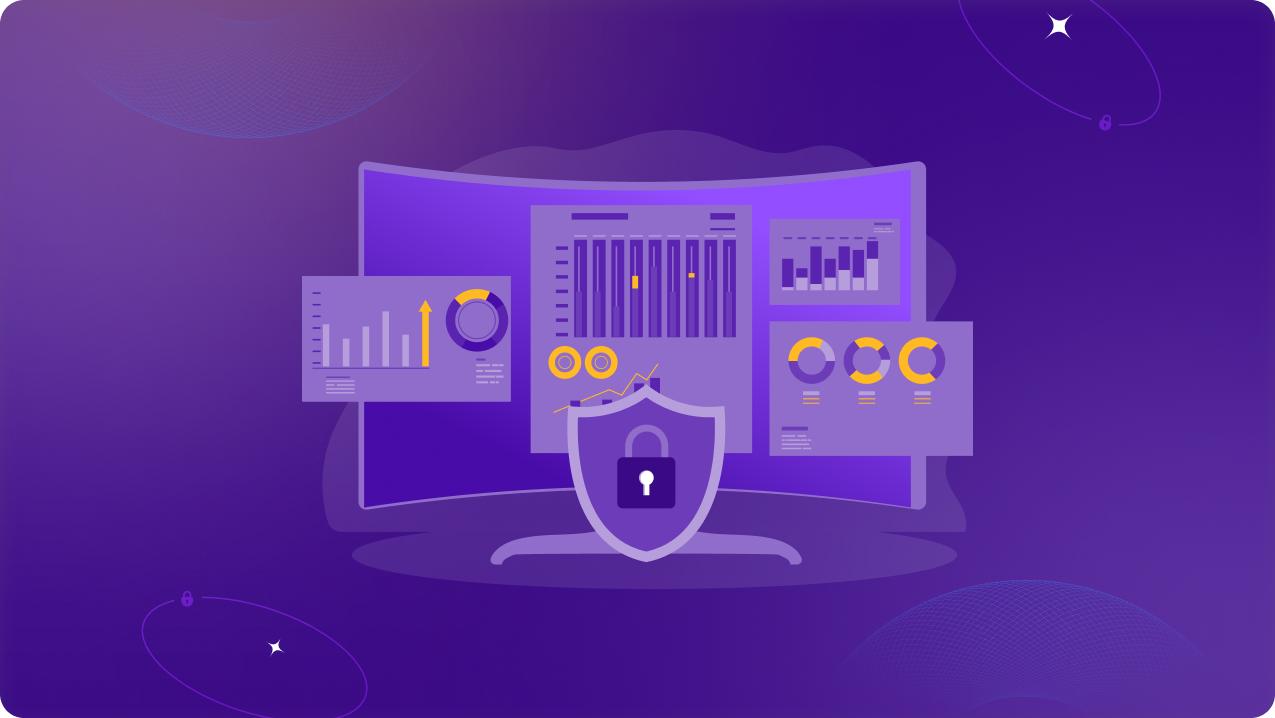Table of Contents
With the rising cybercrime in 2025, every device connected to your company’s network becomes a target. These devices are known as endpoints. They include laptops, smartphones, and tablets used by your employees. According to a recent survey, more than 55% of data breaches that occurred in 2023 were due to the use of personal devices and smartphones to access corporate data.

These devices can become entry points for hackers if they are not properly secured. This can put your business data at risk. Cybercriminals are becoming smarter every passing day. This makes endpoint security an important aspect of your business’s cybersecurity strategy.
This blog discusses some common endpoint security threats and how you can combat them.
1. Phishing Attacks
Phishing is when hackers trick employees into clicking malicious links or downloading infected files, usually through fake emails. Attackers often impersonate trusted sources like company executives, banks, or service providers to steal login credentials or install malware.
How to Combat It:
- Train employees to recognize suspicious emails.
- Use email filtering tools to block phishing attempts.
- Enable multi-factor authentication (MFA) to add an extra layer of security.
- Implement strict access controls to minimize damage from compromised accounts.
2. Malware and Ransomware
Malware (malicious software) and ransomware (which locks files until a ransom is paid) can spread through infected websites, email attachments, or unsecured software. Ransomware attacks have increased significantly, often targeting businesses with critical data.
How to Combat It:
- Install and update antivirus software on all devices.
- Restrict employee permissions to prevent unauthorized software downloads.
- Regularly back up important data to secure storage.
- Implement network segmentation to prevent malware from spreading across the entire system.
3. Unsecured Remote Access
Employees working remotely may use public Wi-Fi or personal devices. This exposes company data to cybercriminals. Without proper security measures, unauthorized users can get access to sensitive business information.
How to Combat It:
- Use a VPN (Virtual Private Network) like PureVPN for Teams to encrypt data.
- Provide employees with secure company-managed devices.
- Set up endpoint security policies to enforce secure connections.
- Enable Zero Trust security principles, ensuring only verified users and devices can access company resources.
4. Weak Passwords and Credential Theft
Hackers use brute-force attacks to guess weak passwords and steal login credentials. Stolen credentials are often sold on the dark web and used for unauthorized access.
How to Combat It:
- Require strong, unique passwords for all accounts.
- Implement password managers to store credentials securely.
- Use Dedicated IPs to limit access to company resources.
- Enforce password rotation policies to reduce credential reuse risks.
5. Outdated Software and Security Patches
Cybercriminals exploit vulnerabilities in outdated software to gain unauthorized access. Many successful attacks occur due to unpatched systems.
How to Combat It:
- Keep all operating systems, apps, and security software updated.
- Enable automatic updates wherever possible.
- Conduct regular security audits to identify weak spots.
- Use endpoint detection and response (EDR) solutions to detect threats in real time.
6. Insider Threats
Not all threats come from external hackers. Employees, whether intentionally or accidentally, can leak sensitive data or fall victim to social engineering attacks.
How to Combat It:
- Implement strict user access controls, allowing employees to access only necessary data.
- Conduct regular security training to raise awareness of insider threats.
- Monitor network activity for unusual behavior that may indicate insider risks.
- Use role-based access control (RBAC) to limit user privileges.
7. IoT and BYOD Vulnerabilities
The rise of IoT (Internet of Things) devices and Bring Your Own Device (BYOD) policies has increased security risks, as personal and unmanaged devices often lack proper security measures.
How to Combat It:
- Create a separate network for IoT and personal devices.
- Enforce strong authentication for all connected devices.
- Use mobile device management (MDM) solutions to secure employee-owned devices.
- Regularly update firmware and security patches on IoT devices.
Stay Secure with PureVPN for Teams
Securing your remote workforce doesn’t have to be complicated. PureVPN for Teams helps businesses protect endpoints by providing:
- Encrypted remote access to keep company data safe.
- Dedicated IPs to restrict access to trusted users.
- Seamless team management to ensure only authorized employees connect.
- Always-on VPN to ensure secure connections at all times.
By implementing these security measures, you can reduce the risk of cyber threats and keep your business data safe. Want to strengthen your endpoint security? Try PureVPN for Teams today.




